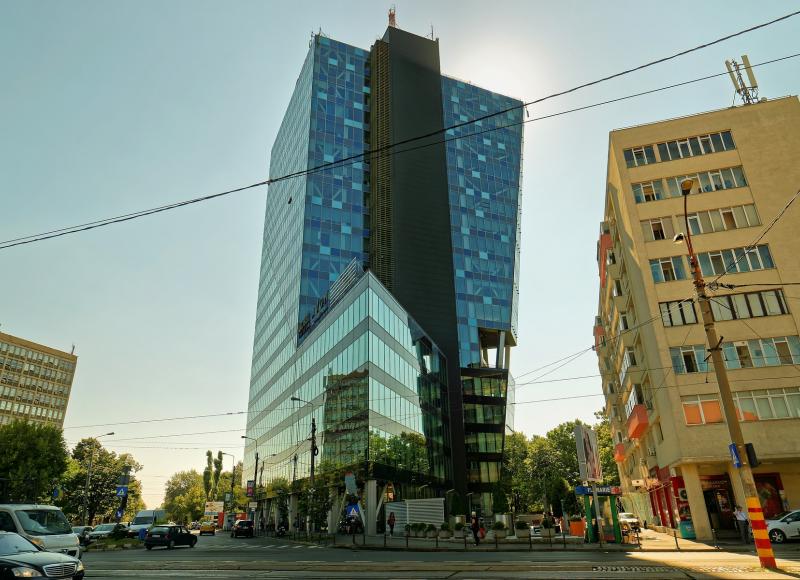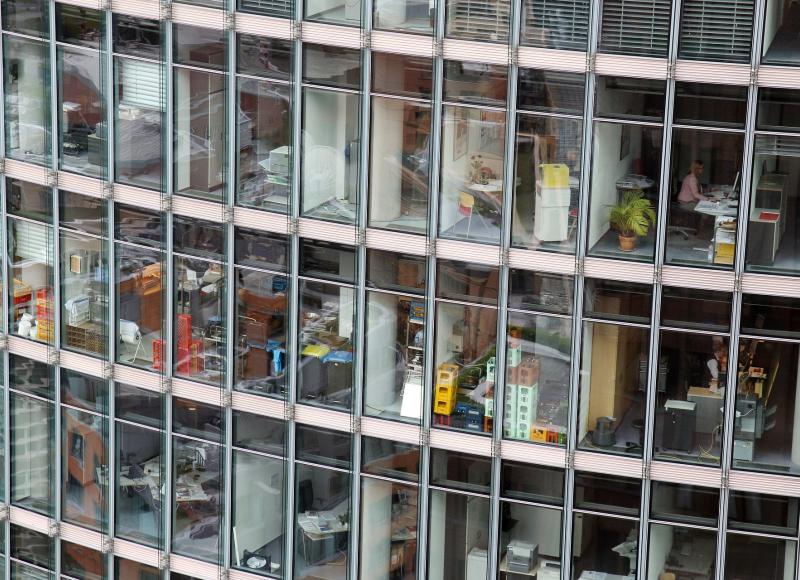Remain Stable. Our Office Market Forecast
Remain Stable. Our Office Market Forecast
Every spring we publish the forecasts for each individual real estate segment; our RIWIS subscribers already know them. A glance at the office markets in class A and B cities shows cautious optimism: The markets will remain stable - despite declining employment, increased home office space and record completions.
The biggest driver of demand for offices is, of course, the development of office employment. But the effects of the recession will be felt particularly by mini-jobbers and the self-employed. However, the majority of office workers will continue to be in employment after the crisis, unless something else comes along. Already during the economic and financial crisis in 2008/2009, the instrument of short-time work proved to be an effective means of preventing job losses, especially in the case of salaried employees. The even more far-reaching design of the current regulations will provide additional protection in the current crisis.
According to our econometric models, a fundamental decline in demand due to declining employment is therefore currently not to be expected in the office sector. A look at the developments on the office market on an annual basis shows that there was still a very strong increase in jobs in the first three months. For the year as a whole, we therefore even expect a slight increase.
Still, the crisis is leaving its mark, which is already noticeable now: Planned new letting projects are being postponed and it is to be expected that space take-up will decline sharply in all markets. All in all, vacancies will rise again and office rent development will flatten out again. The ten-year cycle of rising rents seems to have come to an end for the time being.
It should be noted that the conditions differ fundamentally in each RIWIS city.
How much more office do we need?
Not only the number of office employees, but also the space consumption per capita is relevant for future demand. Here we see two diametrically opposed developments: On the one hand, the relevance of home office regulations in the organisation of work will increase, which will basically have a compressive effect on consumption. On the other hand, new workplace concepts will provide for more distance between employees in order to guarantee hygienic standards.
The trend towards working from home will not have a lasting impact on the office property sector. The home office has become respectable and will certainly be used more in the future - but not permanently (see also Sven Carstensen in the article on capital.de, "Wie es am Markt für Büroimmobilien nach der Krise weitergeht"). Although office workers will continue to work from home for one or two days a week even after the Corona crisis, there will be no permanent shift of the workplace to private homes.
Supply-side considerations - the situation remains stable
The crisis is expected to have a considerable impact on the project development sector - especially construction projects with unsecured financing and low pre-letting rates should be put on hold for the time being. Nevertheless, completion figures of around 1.5 million sqm are expected in the German A-markets this year, which represents an increase of around 40 % over the previous year and the highest figure since 2003. The projects that have been finally initiated are already showing very high occupancy rates and are predominantly meeting with a very tight supply situation in the seven largest office metropolises, which is why project stops are not to be expected here.
By 2024, an average of 1.4 million sqm MFG p.a. of new space will come onto the market. Because of this increase in supply, a slight rise in the vacancy rate in the office markets in the class A-cities is also expected, from currently 2.8 % to around 3.5 % in 2022, which means that a fundamentally positive market condition can continue to be assumed.
Yields are rising - but moderately
Yield compression and a lack of supply of high-quality assets have been the buzzwords of recent years in the commercial German investment market. Due to a lack of alternatives from other asset classes and very positive expectations regarding the further market development demand from both national and international investors has been rising steadily since 2010. At around EUR 75 billion, this then marked a record transaction volume last year. However, the corona crisis and its possible effects are causing uncertainty among many investors - especially the pricing of property values is currently very challenging. The market environment is therefore characterised by a certain rigidity in action. This is typical for uncertain times of crisis. Even after the crisis, the general conditions will continue to be characterised by high investment pressure and a low interest rate environment. Value adjustments are therefore only partially expected; the increase in yields is very moderate overall.
Note: The PDF "Marktwissen Büromarktprognose Frühjahr 2020" (in German language) contains further information on
- Returns,
- Vacancy scenarios,
- Top rents,
- a general economic outlook and
- a brief consideration of the situation of Flexible Workspaces.
We will gladly send it to you on request (rautenberg [at] bulwiengesa.de).
Detailed and regionally differentiated data as well as the respective forecasts for the other asset classes can be found as always in RIWIS, also in English. You can request a test account at riwis [at] bulwiengesa.de.
Contact person: Sven Carstensen, member of the board at bulwiengesa and head of office property, carstensen [at] bulwiengesa.de






